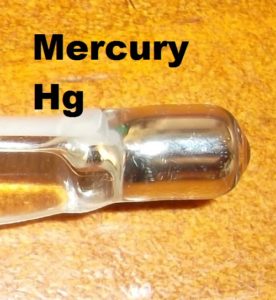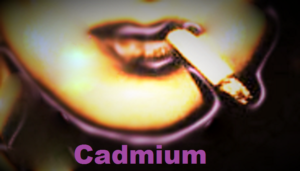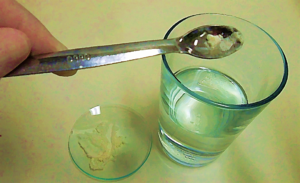
Autoimmune Thyroid Disease and gluten. Is there a connection?
Our digestive system is like a plants’ root system. If a plant is grown in a barren soil deprived of soil bacteria and nutrients, it will not be healthy.
A ‘leaky gut’ allows to filter out undigested larger food molecules instead of just simple fatty acids, amino acids, minerals and vitamins, the building blocks and simple molecules our body needs to function. These simple molecules go through the cell of the intestinal lining into the outside fluid and bloodstream.
However when a person has a leaky gut, unwelcome components can pass through spaces between the intestinal cells to the outside. The junctions between the cells of intestinal lining supposed to be tight and nothing should get through between the cells. However in leaky gut some of the junctions are not closed enough. These components can be undigested molecules, toxins and pathogens. About ¾ of our immune system is associated with our gut. This relationship is extremely important as digestive system is the main contributor to the health of our immune system. Leaky gut is associated with autoimmunity problems but not all leaky gut problems cause autoimmune disorders. Genetic components are also important. Gluten sensitivity is linked to a leaky gut and vice versa, a leaky gut can make a person more sensitive to gluten.
There are many reasons why a person may have an unhealthy gut. They include: poor nutrition (too much sugar, not enough vegetables, too much processed food), lack of fiber in diet, infections, food poisonings, frequent use of antibiotics, illness (including thyroid autoimmunity and thyroid problems, pancreatic insufficiency, etc.), certain medications such as NSAIDS (non-steroidal anti-inflammatory drugs such as aspirin or ibuprofen), stress, toxins (such as food chemicals, pesticides, other additives), food allergies and sensitivities such as sensitivity to gluten. A low stomach acid may play a role in how well gluten is digested and the health of the gut.
Gluten is a protein, a large molecule composed of amino acids. ‘Gluten’ comes from a Latin language and it means glue. It is what gives dough its elasticity. It is found in gluten containing grains. The proteins in gluten are: prolamines and glutelins, folded and coiled and connected by disulphide bridges. Wheat contains prolamine – gliadin and glutelin- glutenin. The prolamine of rye is secalin, prolamine of barley is hordein and oats is avenin. Allergy to gluten is usually strongest to gliadin (in wheat).
Gluten containing food include: wheat bran, wheat, rye, barley (both whole grains and flours) and oats. Wheat flour white bread, cakes, pastries and pasta contain high amounts of gliadin. It is also found as a filler in many products. Modern wheat is different to the wheat our ancestors ate. It has been hybridized and selected for higher yields. The modern farming technology involves using pesticides and fertilizers and bleaching the flour. The flour our ancestors ate was organic, grind whole and unbleached. There are questions regarding the effects of modern wheat on our health which are still awaiting clear answers. Nevertheless, some people are sensitive to gluten containing products.
Good gluten free grains are: brown/white rice, buckwheat, quinoa and amaranth. Quinoa contains lots of iron and methylated folate, which is beneficial.
Gluten is a complex molecule, which is difficult to digest as some of the bonds between amino acids in gluten are uncommonly seen in other proteins. Some sections of undigested gluten can have immuno-modulatory activities in individual people.
Some people are able to dispose of the undigested parts of gluten through their gut easier than others. They can also digest it better. There are individuals in which their overall health is strongly impacted by their gastrointestinal system and it is the key for their well being.
There is an enzyme in human cells called transglutaminase. It is important for linking proteins to collagen in extracellular matrix (outside of cells). Gliadin molecule in gluten looks similar to transglutaminase enzyme and can confuse the immune system in genetically predisposed people. This may result in Coeliac Disease where antibodies to transglutaminase and components of collagen (what holds cells together) are generated.
Gluten, especially gliadin part also shares similarity to thyroid molecules. Therefore, when leaky gut is present, the immune system of genetically predisposed individual can get confused and generate faulty antibodies to thyroid tissues. Also, the auto-antibodies directed against transglutaminase (anti-TGase II antibodies) bind to thyroid cells and the collagen components outside of the thyroid cells and thus could be implicated directly in thyroid autoimmunity which can explain an increased correlation of Coeliac Disease and thyroid autoimmunity.
Gluten sensitivity is associated with Hashimoto’s thyroiditis and Graves’ Disease and other autoimmune disorders. Gluten sensitivity seems to be more strongly associated with Hashimoto’s thyroiditis than Graves’ Disease. Apart from possible gluten sensitivity, casein in cow’ milk products may be a problem for people with thyroid autoimmunity. It seem to be more strongly connected to Grave’s Disease.
Coeliac disease (CD) is an autoimmune disorder, severe allergy to gluten with auto- antibodies to tissue components which can damage intestinal finger-like projections (villi) which absorb nutrients from food. It can co-occur with thyroid autoimmunity. Coeliac disease may sometimes precede thyroid autoimmunity. The links between autoimmune thyroid disease and Coeliac Disease were shown in many scientific research studies (1, 2, 3, and 4). The immune system in people with autoimmunity in general shares common genetic components and can get confused easier. The presence of Coeliac Disease in patients with Autoimmune Thyroid Disorder ranged from 3.3% – 5.5%. There were also few cases of laboratory diagnosis of Coeliac Disease in Autoimmune Thyroid Patients who did not have symptoms of Coeliac Disease (4).
The presence of Autoimmune Thyroid Disease was also 11.8% higher in coeliac patients when compared to controls in a study (4). It is worth mentioning that the diagnosis of Coeliac Disease requires more tests than blood anti-gliadin antibody test. This test is not 100%. Stool analysis is one more sensitive method to detect antibodies produced in the digestive tract rather than blood. Dr. Kenneth Fine at the Intestinal Health Institute had shown that a high percentage of his patients had IgA anti-gliadin antibodies in stool samples and not in blood, 60% and 75% positive versus 11% in the blood (7). Some asymptomatic people have these antibodies. Tissue biopsy and antibody testing to tissue components such as anti-endomysial antibodies or EMA and transglutaminase autoantibodies (TGAA) confirms CD diagnosis. Patients need to be on a gluten containing diet at the time of testing.
It may be beneficial to get tested for Coeliac Disease if you experience a lot of gastrointestinal issues. Coeliac Disease affects 1 in 70 Australians but many others may be not be diagnosed because many symptoms can be unrecognized and some people may be asymptomatic as mentioned before, perhaps in early stages of an illness. Genetic screening for the HLA DQ2/8 gene (present in a half of population) can also be a useful test especially with a family history of an illness. People not carrying this gene are very unlikely to have Coeliac disease. People with Coeliac Disease cannot have any gluten in their food. They need to have gluten-free grains like rice or quinoa, otherwise they get very sick and have symptoms such as bloating, irritable bowel, diarrhea, constipation, gas, abdominal pain, nausea, joint and muscle pain, headaches, skin rashes, tiredness, brain fog, sleep disturbances, anxiety, depression, iron deficiency and emotional issues. In Coeliac Disease secretory IgA antibody binds gliadin and transports it on the outside of the intestinal cell. The immune system generates antibodies to gliadin (in gluten) and the connective tissue in the gut (endomysium), specifically tissue transglutaminase or tTg (also abbreviated as TG2 or TG).
However one does not need to have Coeliac Disease, antibodies and classical changes in gut villi to be sensitive to gluten. Negative coeliac panel tests do not necessary mean that a person is not sensitive to gluten. People with autoimmune thyroid illness may not have Coeliac Disease (as it only co –occurs in about 3-5% of people with thyroid autoimmunity), they may just be sensitive to gluten. Allergic and autoimmune reactions are not present in gluten sensitivity. A study reported that about 6.8% of population were diagnosed in Non-Coeliac Gluten Sensitivity –NCGS (15). More specifically, patients have negative serological tests for Coeliac Disease (endomysial and/or tissue transglutaminase antibodies) but antigliadin antibodies may be present. They may have other antibodies to various wheat and tissue components (15, 17). This was demonstrated in a patient with Crohn’s Disease (17) who also had NCGS. The immune system mechanisms of gluten sensitivity are not clearly understood. People with gluten sensitivity may also have symptoms triggered by other molecules present in rye or barley. This sensitivity may possibly be connected to stress, toxins, low stomach acid, hormonal imbalances and other factors. People who are sensitive to gluten might have symptoms similar to Irritable Bowel Syndrome. They might experience discomfort, gas and burping after they eat gluten containing food. A research study showed that heartburn, stomach ulcers, GERD may be linked to gluten sensitivity. Complete stool diagnostic test can determine the health of the digestive system.
Dr. Alessio Fasano, a leading expert in Celiac Research and Gastroenterology has done a lot of research into non-celiac gluten sensitivity. It was noted by Dr Fasano and other health practitioners that people with IBS (Irritable Bowel Syndrome) like symptoms such as bloating, abdominal pain, constipation and diarrhea and no Coeliac Disease improved their gastrointestinal symptoms on a gluten free diet. Some people report feeling generally better and happier as gluten sensitivity may affect brain and other tissues.
People, sensitive to gluten, have an immune response to undigested parts of gluten molecules, which causes inflammation although exact mechanism are yet to be understood. The nervous system influences the permeability of tight junctions to macromolecules, thus modifying mucosal barrier of the digestive system through neuropeptides. Thus stress plays a big role in the gastrointestinal health. It is important to have a balanced but flora. The beneficial bacteria in our gut ‘educate’ the immune system how to function properly. A healthy gut flora reduces the over-activity to some food antigens and prevents allergies.
Gluten intolerance can cause low levels of diamine oxidase (DAO) in the digestive system, which breaks down histamine. Histamine is an immune system modulating molecule, which causes an immediate inflammatory response. The intestinal lining can become more permeable to certain toxic molecules, which leak through it and enter the blood system. Inflammatory molecules can be released as a reaction to gluten sensitivity, opening passages between the cells of gastrointestinal tract, allowing toxic molecules to leak through these passages. Dr. Alessio Fasano and his team of researchers had discovered a molecule called zonulin (10), a protein that can be triggered by gluten and other molecules, which is expressed in all autoimmune conditions and is associated with leaky gut. Dr. Fasano’s and his research team are working on a new medication which inhibits zonulin.
Gluten sensitivity may play a big part in some people. As mentioned previously, the gut is closely connected to the immune system and as gluten can mimic some molecules of the thyroid, subsequent attack on thyroid attack is possible.
Personally, I do not have Coeliac Disease. I was tested for blood anti-gliadin antibodies when I had experienced a lot of IBS like symptoms while on sub optimal thyroid hormonal treatment after my thyroid removal. This is not surprising as the luck of T3 hormone creates lots of negative effects on the gastrointestinal system. Without adequate T3 a person suffers from a low stomach acid and poor digestion of proteins such as gluten. People with a low stomach acid can have vitamin B12 or iron deficiency. My issues subsided with the introduction of Natural desiccated thyroid to my levothyroxine hormonal replacement. I was skeptical in regards to gluten for years until my integrative doctor suggested to try to lower my inflammation levels by avoidance of gluten. I thought that it is possible that I may have gluten sensitivity and a gluten free trial would help me determine that. I had gone on a complete gluten free diet for six months and I did see improvements in my well- being, less bloating, better digestion and feeling better. The markers of my inflammation had decreased (anti-nuclear antibodies- ANA). When people lower their inflammation, T3 hormone works better in their body. However I am not sure if the markers of inflammation went down specifically due to gluten as I had made some other positive changes. I personally feel that I am more sensitive to cow’s milk products than wheat. These days, I am still limiting gluten products and a light gluten exposure works for me. I feel better when I limit gluten and will continue to do so.
However, every situation is unique and the power of your personal observation is important. Gluten free diet may benefit people with autoimmunity problems. We know that there is a connection between thyroid autoimmunity and Coeliac Disease. We also know that some people with autoimmunity have Non Coeliac Gluten Sensitivity. A Case Report in Non-Coeliac Gluten Sensitivity and Autoimmunity (18) says that: “Non-coeliac gluten sensitivity can be associated with autoimmune manifestations and, more importantly, that the finding and treatment of non-coeliac gluten sensitivity can be critical for the management of an otherwise refractory patient.”
One of the important observation derived diet tips for Hashimoto’s thyroiditis and Graves’ disease suggested in literature is the avoidance of gluten. It was found in a study (12) that gluten withdrawal may in distinct cases, reverse thyroid abnormality.
Apart from thyroid autoimmunity, some people who have coeliac disease may also suffer from sub clinical non-immune hypothyroidism which may be due to malabsorption of nutrients.
Bone broths, foods containing gelatin, organic food which includes lots of vegetables, apple cider vinegar, fermented vegetables and stress reduction may also improve the health of gastrointestinal system. It is also important to avoid any other food your body reacts negatively to.
Speak to your doctor if you have any digestive issues.
This blog is for educational purposes only.
References:
- Pekka Collin, Jorma Salmi, Olavi Hällström, Timo Reunala and Amos Pasternack. Autoimmune thyroid disorders and coeliac disease. Eur J Endocrinol 1994; 130:137–40.
- Akçay MN, Akçay G. Hepatogastroenterology. The presence of the antigliadin antibodies in autoimmune thyroid diseases. 2003 Dec; 50 Suppl 2.
- Chin Lye Ch’ng, MRCPI, M. Keston Jones, MD, FRCP, and Jeremy G. C. Kingham, MD, FRCP. Celiac Disease and Autoimmune Thyroid Disease. Clin Med Res. 2007 Oct; 5(3): 184–192.
- Sategna-Guidetti C, Bruno M, Mazza E, Carlino A, Predebon S, Tagliabue M, Brossa C. Autoimmune thyroid diseases and coeliac disease. Eur J Gastroenterol Hepatol. 1998 Nov; 10(11):927-31.
- Hakanen M, Luotola K, Salmi J, Laippala P, Kaukinen K, Collin P. Clinical and subclinical autoimmune thyroid disease in adult celiac disease. Dig Dis Sci. 2001 Dec; 46(12):2631-5.
- Ruuskanen A, Kaukinen K, Collin P, Huhtala H, Valve R, Mäki M, Luostarinen L. Positive serum antigliadin antibodies without celiac disease in the elderly population: does it matter? Scand J Gastroenterol.2010 Oct; 45(10):1197-202.
- Carlo Catassi and Alessio Fasano. Tempters and Gluten- Free Diet. Nutrients. 2016 Dec; 8(12): 786.
- Chin Lye Ch’ng, MRCPI, M. Keston Jones, MD, FRCP, and Jeremy G. C. Kingham, MD, FRCP. Celiac Disease and Autoimmune Thyroid Disease. Clin Med Res. 2007 Oct; 5(3): 184–192.
- Fasano A. Leaky Gut and autoimmune disease. Clin Rev Allergy Immunol. 2012 Feb; 42(1):71-8.
- Fasano A. Zonulin and Its Regulation of Intestinal Barrier Function: The Biological Door to Inflammation, Autoimmunity, and Cancer. Physiol Rev. Vol 91. Jan 2011. 151-175.
- Naiyer AJ, Shah J, Hernandez L, Kim SY, Ciaccio EJ, Cheng J, Manavalan S, Bhagat G, Green PH. Tissue transglutaminase antibodies in individuals with celiac disease bind to thyroid follicles and extracellular matrix and may contribute to thyroid dysfunction. Thyroid. 2008 Nov; 18(11):1171-8.
- Sategna-Guidetti C, Volta U, Ciacci C, Usai P, Carlino A, De Franceschi L, Camera A, Pelli A, Brossa C. Prevalence of thyroid disorders in untreated adult celiac disease patients and effect of gluten withdrawal: an Italian multicenter study. The American Journal of Gastroenterology. 2001; 96(3): 751–757.
- Carlo Catassi, Julio C. Bai, Bruno Bonaz, Gerd Bouma, Antonio Calabrò, Antonio Carroccio, Gemma Castillejo, Carolina Ciacci, Fernanda Cristofori, Jernej Dolinsek, Ruggiero Francavilla, Luca Elli, Peter Green, Wolfgang Holtmeier, Peter Koehler, Sibylle Koletzko, Christof Meinhold, David Sanders, Michael Schumann, Detlef Schuppan, Reiner Ullrich, Andreas Vécsei, Umberto Volta, Victor Zevallos, Anna Sapone, and Alessio Fasano. Non-Celiac Gluten Sensitivity: The New Frontier of Gluten Related Disorders. Nutrients. 2013 Oct; 5(10): 3839–3853.
- Geoffrey Holmes. Non coeliac gluten sensitivity. Gastroenterol Hepatol Bed Bench. 2013 Summer; 6(3): 115–119.
- Capannolo A, Viscido A, Barkad MA, Valerii G, Ciccone F, Melideo D, Frieri G, Latella G. Non-Celiac Gluten Sensitivity among Patients Perceiving Gluten-Related Symptoms. Digestion. 2015; 92(1):8-13.
- Imran Aziz and David S. Sanders (2012). Emerging concepts: from coeliac disease to non-coeliac gluten sensitivity. Proceedings of the Nutrition Society, 71, pp 576-580.
- Aristo Vojdani and David Perlmutter. Differentiation between Celiac Disease, Nonceliac Gluten Sensitivity, and Their Overlapping with Crohn’s Disease: A Case Series. Case Reports in Immunology.Volume 2013 (2013), Article ID 248482, 9 pages. URL: https://www.hindawi.com/journals/crii/2013/248482/
- Carlos Isasia, Isabel Colmenerob, Fernando Cascoc, Eva Tejerinad, Natalia Fernandez-Pugae. Non-Coeliac Gluten Sensitivity and Autoimmunity: A Case Report. URL: http://ejcrim.com/index.php/EJCRIM/article/view/156/206
- Grain brain David Perlmutter, MD. Little, Brown and Company. Hachette Book Group. 2013 New York.
- Diagnosing coeliac disease – the key facts URL: http://www.coeliac.org.au/uploads/65701/ufiles/Fact_sheets/DiagnosingCoeliacDisease.pdf
- An Interview with Dr. Kenneth Fine of EnteroLab.com and the Intestinal Health InstituteCeliac.com. URL: https://www.celiac.com/articles/23428/1/An-Interview-with-Dr-Kenneth-Fine-of-EnteroLabcom-and-the-Intestinal-Health-Institute/Page1.html.)
- Sarah Wilson. URL:http://www.sarahwilson.com/2015/11/should-i-be-eating-gluten-if-i-have-hashimotos-i-mean-really/
- Chris Kresser. The gluten thyroid connection. URL:https://chriskresser.com/the-gluten-thyroid-connection
- MTHFR support. Australia. URL:https://www.mthfrsupport.com.au/dao-deficiency-and-histamine-the-unlikely-connection/URL:
- Gluten Free Society. URL:https://www.glutenfreesociety.org/gluten-sensitivity-induces-acid-reflux/#QbsgUG90I4WtrY5g.99





